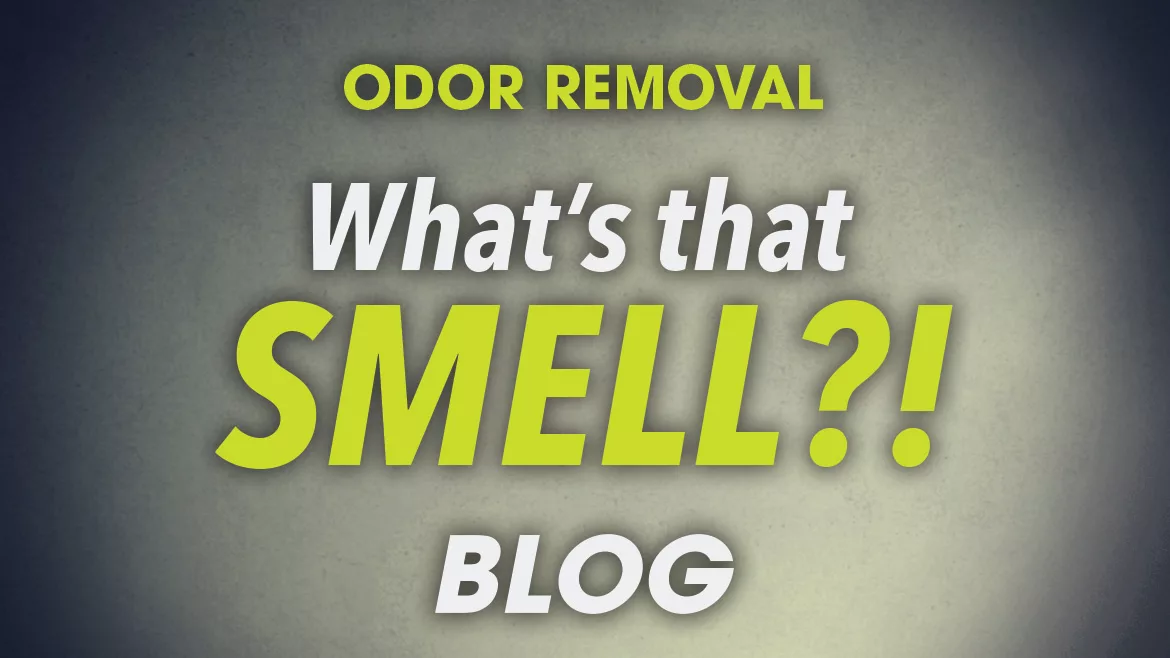5 Popular Odor Removal Techniques

This industry faces odor issues on almost every single job. Water mitigation jobs can drum up moldy, musty smells; fires, of course, smell smokey. Plus, there are so many VOCs give off various odors, snuffing out unpleasant odors for you clients can often turn into the most difficult part of the job.
Before you go about choosing the best odor removal method for a job, there are three basic principles to follow:
- Identify the root cause of the odor. If you're not sure where the odor is coming from, it's time to put on your detective hat and start evaluating what you know about structures, IAQ, and the environment.
- Remove the source. This is one of the most critical elements of odor removal. If you don't remove the source, the odor will be back in no time. In the case of a fire, it could be horribly charred wood; in a flood, it could be saturated and moldy carpet.
- Remember odor is subjective, and tied directly to our olfactory system so everyone's sense of smell is a bit different. What may smell noxious to your client may not to you, or vice-versa.
Now, once you've taken those principles into consideration, it's time to choose the best odor removal technique for the job. It's important to keep your client in mind when choosing which route to go. For example, are they chemically-sensitized? If so, make sure the route you choose is a safe option for them.
Ozone
Ozone has been around for decades, and until the last 10 years or so was the odor removal technology of choice, despite safety concerns. Ozone reacts with odor molecules by transferring the “extra” oxygen atom of the ozone molecule to the odor molecule, changing its composition so it no longer has the same chemical makeup. While very effective in eliminating odors, it can be harmful to people and things.
Hydroxyl
This is an effective odor removal technology that continues gaining more popularity in the industry, as the use of ozone fades due to safety concerns. Hydroxyls are the second strongest oxidant in the world behind atomic fluorine. They are one million times more reactive than ozone, which means they break down a much broader range of odors and pathogens compared to ozone. Many believe it is safe to run hydroxyl generators in occupied spaces, but there are a few contractors who ere on the side of caution and choose to run them when job sites are empty.
Foggers
Foggers are becoming popular in the industry for a variety of uses, not just odor removal. Fogging is simply a method of applying odor control technologies. There are two types: ULV (cold) fogging/misting and thermal (hot) fogging. Products like odor eliminators, paring agents, and oxidizers can be used in foggers. Just remember, again, to keep your client in mind if you choose this route as you'll be adding something to the air and environment.
Absorption/Adsorption
Instead of adding something to the environment, this method pulls the odor out. Think Odor Eaters or Damp Rid. While those are more consumer-grade solutions, there are some more professional-grade options available through restoration suppliers today that can grab a wide range of odor molecules and pollutants from the air.
Sealing
Sealers are generally used after other odor removal techniques are complete to ensure the job is complete and the odor doesn't return. Sealers are most commonly used during fire damage restoration jobs. One example might be heavy fire damage, resulting in odors deeply embedded into wooden beams in a building. To prevent odors from later working their way out of the materials, one option is to paint an odor sealer product on the surface.
Want to know more about odor removal? R&R has entire section of the website dedicated to that hot topic! Click here to check it out!
